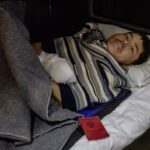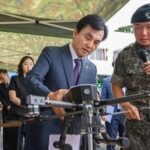
Despite numerous casualties, North Korea is accelerating its efforts to install landmines and anti-tank barriers within the DMZ. Analysts suggest that these actions are aimed at strengthening internal control, such as preventing North Korean residents from defecting to South Korea.
On the 18th, South Korean military authorities stated that while North Korea’s barrier installation activities may be aimed at turning the Military Demarcation Line (MDL) into the border, it’s too early to make a definitive conclusion.
Last November, North Korea declared the complete abolition of the 9/19 inter-Korea Comprehensive Military Agreement and began restoring 11 observation posts (OPs). Following this, in January, North Korean leader Kim Jong Un ordered measures to separate inter-Korean connectivity conditions during the Supreme People’s Assembly, resulting in the installation of landmines in areas connected to South Korea, such as the Gyeongui Line, Donghae Line, and Hwasalmeori. Since April, North Korea has been deploying troops to various frontline areas, clearing land, installing landmines, reinforcing tactical roads, and installing structures that appear to be anti-tank barriers.
Anti-tank barriers are being constructed to heights of approximately 13 to 16 feet, with widths varying from several dozen yards to a few hundred yards in length. These barriers are installed at four gates on the North side of the DMZ, which serve as entry points, making it challenging for both people and vehicles to enter. Also, landmines are concentrated in areas known for defections, and uninhabited zones are being created by removing shrubs to enhance visibility for observation from North Korea.
North Korea is expected to gradually expand its work area, following future weather conditions such as heavy rain periods and the supply of manpower and materials. However, it expressed skepticism about installing anti-tank barriers along the MDL, suggesting it could create a borderline similar to the Berlin Wall.
A South Korean Joint Chiefs of Staff official said, “We are closely tracking activities in frontline areas of the North Korean military in preparation for any sudden situations. We cooperate closely with the UN Command regarding violations of the Armistice Agreement and other matters.”
Meanwhile, it was reported last month that the South Korean Joint Chiefs of Staff identified the North Korean military installing new structures that appear to be anti-tank barriers in three areas within the DMZ and have officially requested an investigation from the UN Command.















Most Commented